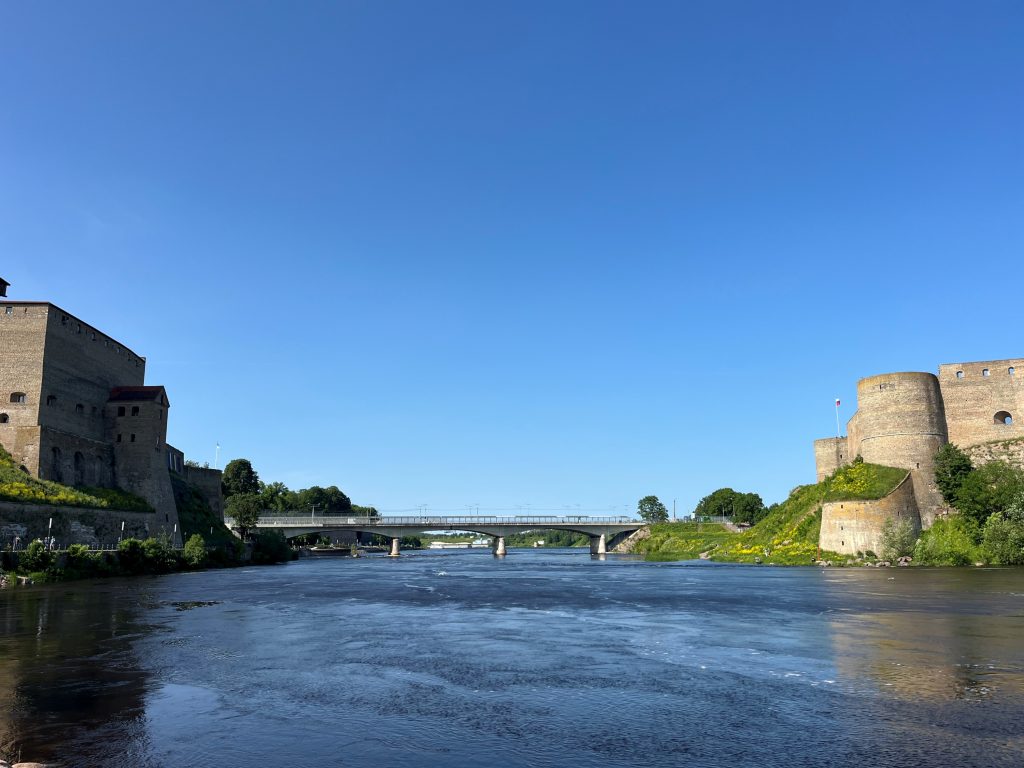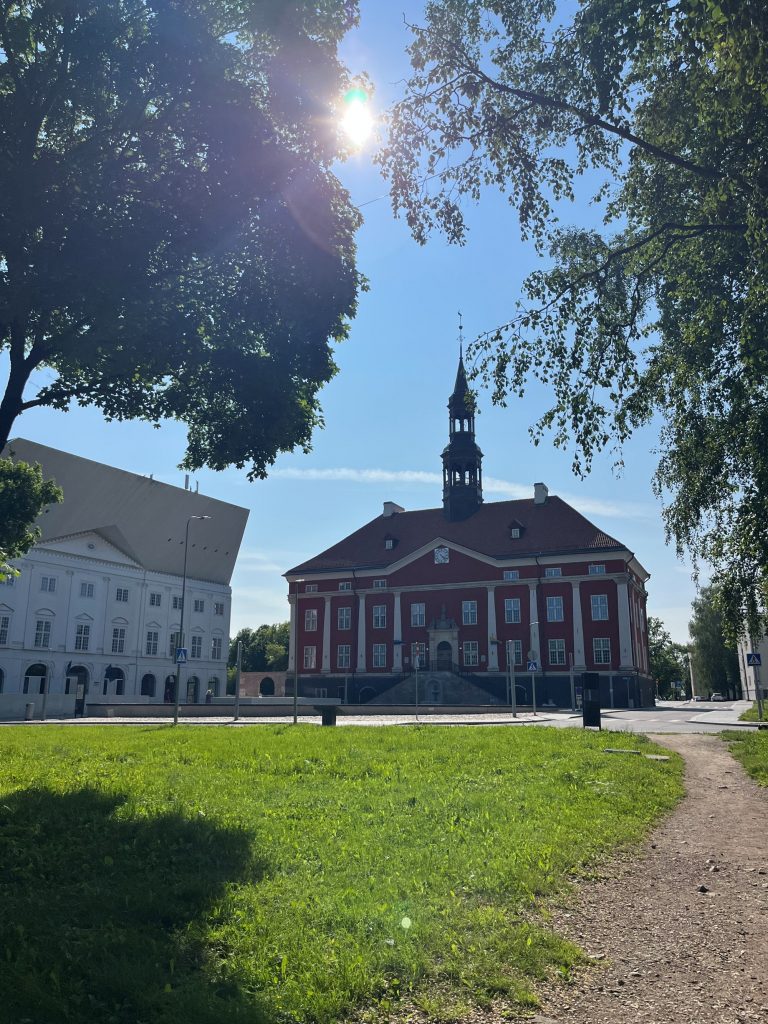With the final interviews conducted, the official part of my stay in Estonia has come to an end. This past week in Narva offered me a different view of the country. Resulting not only from the conversations I had, but also in the language spoken on the streets, the architecture, and the general atmosphere of the city and its surroundings. Even my Instagram algorithm noticed the shift: I started seeing more Russian-language content, including a promotional video encouraging travel to Moscow.

What I like about Narva is that it’s a city that is not trying to impress; it shows you its many sides, unapologetically. And it invites you to look at it from many different angles. There’s Narva Castle with its view across the river to the fortress in Ivangorod, Russia. There’s the daily queue of people waiting to cross the border. There’s the elegant town hall and the architecture of Narva College. Then there are the Soviet-era Stalinka and Khrushchyovka apartment blocks, street art, and art exhibitions.

In terms of fieldwork, I spoke to 37 people in Narva and the nearby city of Jõhvi. Broadly speaking, their views echoed patterns I mentioned in my previous post: the general pattern seems to be that people don’t trust any media and try to avoid political news, and voting during political elections. A recent legal change also plays a role here, as citizens of Narva who hold Russian passports and Estonian residence permits are no longer allowed to vote in local elections, excluding them from political participation.
Before flying back home, I’ll spend some time further exploring Estonian nature. Perhaps the most Estonian way to understand Estonia.
